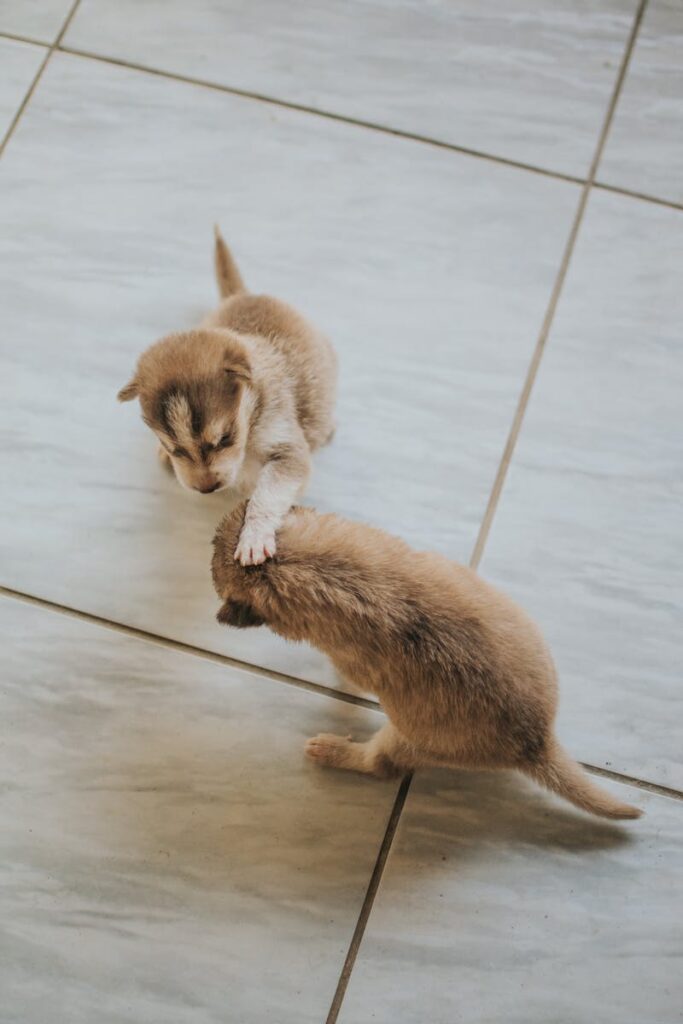Hello, dog lovers! If you’ve ever watched your dog push or punch another dog during play and wondered what’s going on, you’re not alone. This behavior can seem aggressive or dominant, but often, it’s just part of how some dogs interact. Let’s dive into why some dogs display these pushy behaviors and how you can manage them to ensure safe and friendly playtimes.
The Roots of Rough Play
1. Play Style Preferences: Just like humans, dogs have individual play styles. Some enjoy gentle play, while others prefer a rough-and-tumble approach. Dogs who push or punch often fall into the latter category, using their paws and bodies to initiate play in a more physical way.
2. Communication Through Body Language: Dogs use body language to communicate, and pushing or punching is one way they might try to provoke a playful reaction from their peers. It’s a form of dog-dog interaction that, while it might seem rude to humans, can be quite normal among canines.
3. Testing Boundaries: In some cases, dogs use pushing or punching to test the boundaries of their playmates. It’s a way for them to figure out how much roughhousing their friends are comfortable with, establishing rules and limits within their social group.
When Play Becomes Problematic
While pushy behavior can be normal, it’s important to recognize when it crosses the line into aggression:
1. Reading the Room: A key part of healthy play is reciprocity. Watch how other dogs respond to your dog’s advances. If they seem scared, stressed, or overwhelmed, it’s time to intervene. Not all dogs appreciate rough play, and continuing in such situations can lead to fights or injuries.
2. Escalation of Aggression: Monitor for signs of aggression such as growling, snapping, and biting that’s not playful. If you notice any of these behaviors, separate the dogs immediately. This kind of play is no longer safe or friendly.
3. Dominance Issues: Sometimes, what starts as playful pushing can become a way for a dog to assert dominance over others. If your dog consistently knocks over or intimidates other dogs, it might be time to reassess their play habits and possibly consult a professional trainer.
Managing and Redirecting Rough Play
1. Proper Socialization: Introduce your dog to a variety of playmates and play styles early in their life. This exposure can help them learn to modulate their behavior according to the preferences of their playmates.
2. Obedience Training: Teach your dog commands like “leave it” or “gentle” to curb overly rough behaviors. Being able to control your dog’s actions during play is crucial for preventing escalation into aggression.
3. Choosing the Right Playmates: Try to pair your dog with playmates who have similar play styles. Dogs who like to roughhouse can tire each other out without one party feeling bullied or overwhelmed.
4. Providing Enough Exercise: Ensure your dog gets plenty of exercise. Often, overly rough play is a result of excess energy. More structured exercise like long walks or runs can help burn off energy that might otherwise go into rough play.
Conclusion
Understanding why your dog engages in pushy behaviors like punching and pushing during play can help you better manage their interactions with other dogs. By keeping an eye on their play style and ensuring they learn how to interact appropriately, you can help your dog have fun and stay safe while playing with their furry friends.



